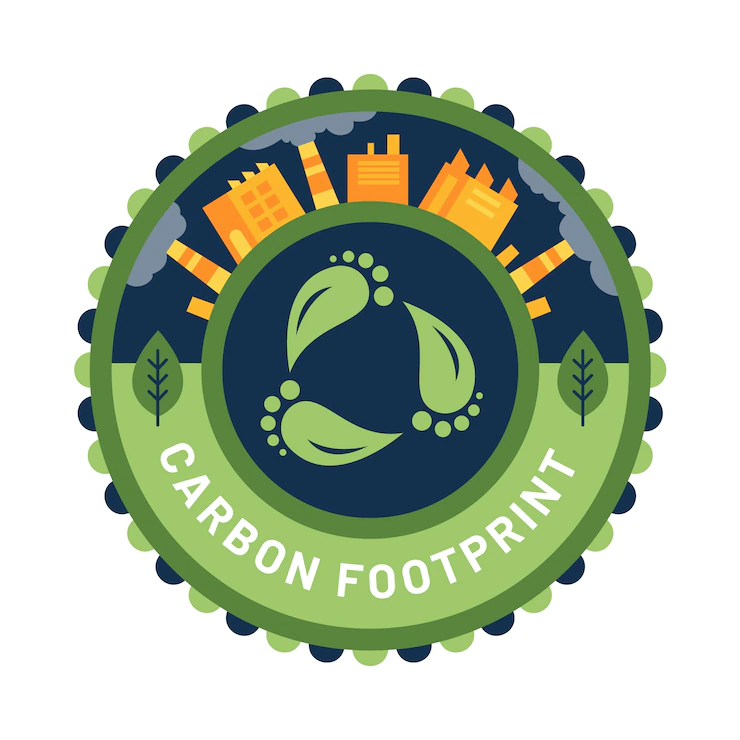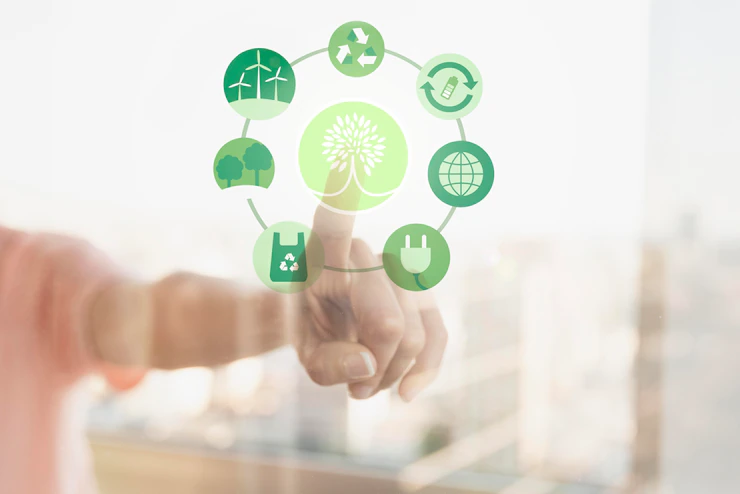What Is A Carbon Footprint, And How Can Companies And Individuals Reduce Theirs?
5 Mins Read
Published on: 04 August 2022
Last Updated on: 09 November 2024

toc impalement
Extreme weather conditions are now five times more prevalent than they were 50 years ago due to global warming. Carbon footprints, environmental pollution, and deforestation contribute to this drastic change, posing a threat to human civilization.
This situation raises questions about carbon footprint and how individuals and companies can reduce theirs.
Carbon footprint refers to the overall quantity of greenhouse gases (GHG) produced to sustain a person’s lifestyle and activities, whether directly or indirectly. Individuals, organizations, products, and events have carbon footprints expressed in equivalent tons of CO2 over a year.

GHG emissions contribute to the carbon footprint from fossil fuel production and consumption, food, industrial goods, materials, and transportation.
Carbon footprints are hard to quantify because of incomplete data on the processes that contribute to them and the role of the earth in storing and releasing carbon dioxide.
Fortunately, with the newest climate technologies, you can get accurate accountability and areas of improvement. Individuals and companies can reduce carbon footprints to help the environment.
Measure Carbon Footprint
The first step towards reducing your carbon footprint is identifying areas of greenhouse gas emissions. Start by measuring your company’s carbon footprint from commercial operations to discover your present state and areas of improvement.
Your company’s sustainability department will be best to handle calculating the carbon footprint.

Many technologies abound to calculate a company’s overall greenhouse gas emissions. Take advantage of this and employ a sustainability business consultant that will analyze your carbon footprint and build a strategy to reduce it, provide assistance during implementation, obtain certifications for sustainability, and provide the required training.
An excellent way to measure your carbon footprint is using a reliable gas emissions accounting and management platform like Greenly. They’re a wonderful company that helps decarbonize your business through rigorous footprint calculations and accounting powered by the newest climate science.
Use Renewable Energy
Conversion to renewable energy is now more straightforward than before, thanks to the emergence of green energy options on the market. Reach out to your energy supplier to see if they offer any renewable energy options.
Unless you’re employing renewable energy, your use of energy emits carbon dioxide into the atmosphere. These two renewable energy sources, solar and wind, are the fastest-growing alternative energy sources.

Investing in sustainable energy sources like solar electricity will save your organization money in the long run, despite the upfront expense. Installing solar panels on the company’s land, whether owned or leased, is one option to explore.
Employ Greener Means Of Transportation
Now is a good period to change to hybrid or electric vehicles for your company’s fleet before the UK ban on new petrol and diesel automobiles takes effect in 2030.
Automobile manufacturers are pouring enormous resources into the development of electric vehicles, recognizing the urgency of moving quickly to renewable energy sources.

When you consider the number of vehicles on the road and the average yearly distance traveled, the UK generates an estimated 38 million metric tons of CO2 per year only from automobiles! Fuel extraction and refining also contribute to greenhouse gas emissions. You can significantly influence the country’s carbon footprint if your company goes electric.
Encourage employees to use electric cars and vehicles that emit no harmful emissions. This way, you reduce eliminating gaseous substances into the environment, contributing to carbon footprint and consequentially global warming.
Reduce, Reuse And Recycle Products
When discussing environmental sensitivity, it is imperative to adhere to the three R’s principle. Consider every facet of your organization, including office supplies, packaging, and operations.
Which of these areas can you reduce waste? These products have a carbon footprint because of their production and transportation. Begin by reducing, reusing, and recycling any material to reduce gas emissions.

You Can Also Check: Reducing Your Average Household Energy Consumption
Use sustainability procurement to get staff thinking about how they can cut back on things like water, paper, food, and drink, as well as computers, phones, and packaging. You can also lower your company’s carbon emissions by buying recycled paper or reconditioned computers and phones.
Following the GHG Protocol, you release more carbon dioxide using papers from original sources rather than recycled ones. Integrate sustainable practices across your whole supply chain, especially if your company is significant.
Go Paperless
Most companies use paper for daily business activities. While it’s a standard record keeping and information exchange, you need to look for alternatives to reduce your carbon footprint.

Your business should make the change to digital storage and communication. Cut back on printing and digitize as much as possible to save paper use (e.g. online document signings, avoiding printing emails and documents).
In the end, e-documents help quickly retrieve information from the cloud anywhere.
Reduce Physical Meetings
During the 2020 and 2021 national lockdowns, most of the UK’s working population was likely to use virtual meetings. That may be via Zoom, Teams or Slack, or even Facebook Rooms.

Regardless of the platform, having online meetings will help reduce carbon footprints because of the reduced fuel consumption in powering vehicles for transportation. This is a win-win for everyone.
One-fifth of worldwide CO2 emissions are a result of transportation. You can also significantly reduce the world’s CO2 emissions by reducing your travel habits.
Educate Employees
Educating employees and coworkers is essential to ensure that your carbon footprint reduction strategies are successful. Your progress in this endeavor depends on how well-informed your company’s personnel are.

Encourage open dialogue with your company’s employees, board of directors, and consumers. Remember that education is a continuous process, so ensure to update them on the latest developments through frequent education sessions.
Plant Trees
Planting trees, or having a working garden, is a fantastic way to improve employee well-being and offset your company’s carbon footprints. If you don’t have the time to grow your trees or flowers, there are dozens of online tree-planting programs.

You can also contribute to tree planting and other biodiversity projects even if you cannot grow the trees yourself. Some tree planting initiatives even provide a certificate showing how many trees you’ve planted, their location, and how much carbon they’ll trap when fully grown.
Power Off Idle Appliances
Even when not in use, electrical appliances take electricity from the grid. Although these gadgets have “standby mode,” they still use energy, which impacts the environment.

Unplug whatever you’re not using, including your television, microwave, air conditioner, computer, and other electronic equipment. Employ this method in your corporate and individual life to help the environment.
Read Also:


















Comments Are Closed For This Article